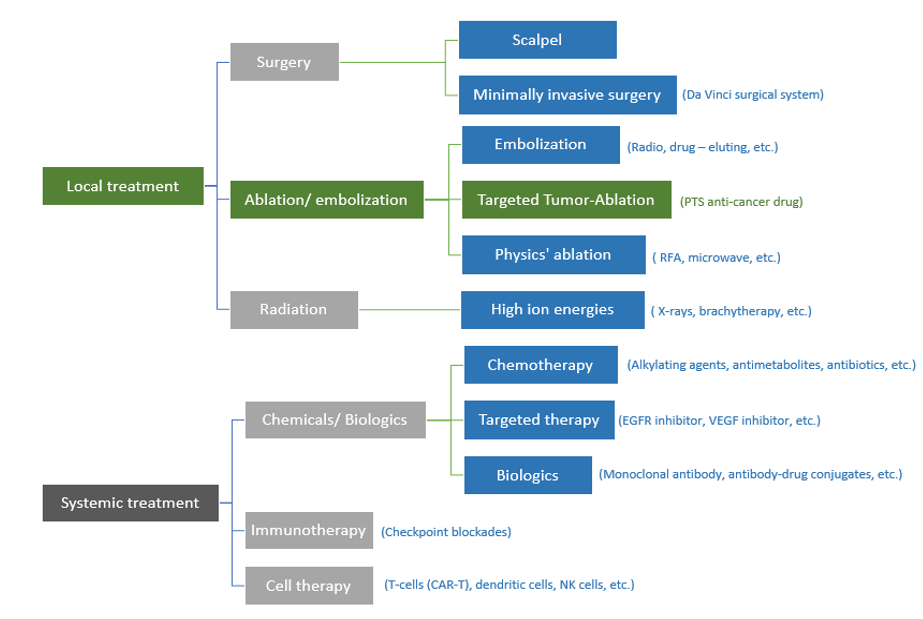|
Minimally-Invasive Targeted Ablation |
PTS |
|
Minimally-Invasive |
PTS is intratumorally injected to tumor cells via percutaneous puncture by utilizing bronchoscopy, endoscope, or image-guided equipment (ultrasound or CT) to locate the tumor. Comparing to the traditional open surgery (i.e. laparotomy), the minimal-invasive surgery provides small lesion, less pain, less bleeding, and less infection after surgery. Also there is no adhesion, no stitch removal required after surgery, as the result the recovery time is short without leaving ugly surgical scar, which is of great significance to the patient's postoperative recovery. |
|
Targeted |
PTS is specifically administered to tumor cells through intratumoral injection, without affecting adjacent tissues; Moreover, In vitro studies show that PTS can penetrate the cancer cell membrane quickly once contacting with cancer cells and accumulate in the cytoplasm in a large amount, and the PTS concentration is dozens of times in cancer cells relatively to that in normal cells, which eventually leads to the tumor necrosis. With administration specifically to the tumor site and killing selectivity PTS possessed to the tumor cells, these two characteristics constitute PTS’ targeted feature. |
|
Quick Ablation |
PTS is a small molecule and chemical anticancer drug, which caused tumor cells necrosis with 24 hours after minimally-invasive intervention, but only caused minimal damage to the adjacent normal cells |
Owing to above features, we named PTS treatment as “Minimally-Invasive Targeted Chemical Ablation. Furthermore, based on a series of clinical trials in solid tumor, including head and neck cancer, breast cancer, lung cancer and liver cancer, not only PTS has demonstrated its efficacy in killing malignant tumors, but also its safety through administration specifically to the tumor site utilizing image-guided equipment and selectivity PTS possessed to the tumor cells that caused no side effect like traditional chemotherapy does

References
- Para-toluenesulfonamide induces tongue squamous cell carcinoma cell death through disturbing lysosomal stability.
- The fate of saccharin impurities: the extraction and metabolism of [14C]Toluene-4-sulphonamide and 4-sulphamoyl[14C]benzoic acid in the rat.
- Metabolism and effect of para-toluene-sulfonamide on rat liver microsomal cytochrome P450 from in vivo and in vitro studies.

